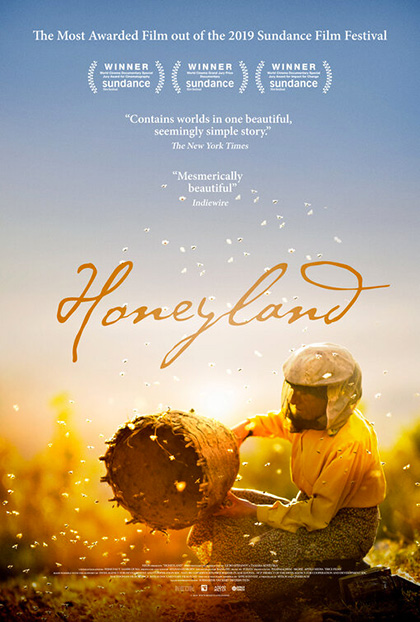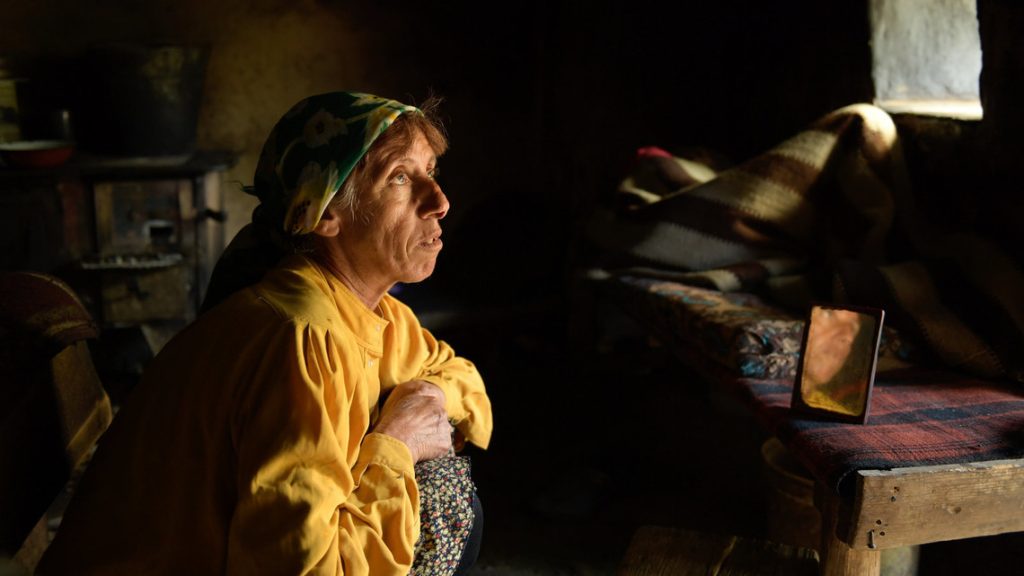A-D
E-H
I-N
O-R
S-T


Nestled in an isolated mountain region deep within the Balkans, Hatidze Muratova lives with her ailing mother in a village without roads, electricity or running water. She’s the last in a long line of wild beekeepers, eking out a living farming honey in small batches to be sold in the closest city – a mere four hours' walk away. Hatidze’s peaceful existence is thrown into upheaval by the arrival of an itinerant family, with their roaring engines, seven rambunctious children and herd of cattle. Hatidze optimistically meets the promise of change with an open heart, it doesn’t take long however, before a conflict evolves that exposes the fundamental tension between nature and humanity, harmony and discord, exploitation and sustainability.
The debut feature from documentarians Ljubomir Stefanov and Tamara Kotevska, HONEYLAND is made with the widescreen sweep of an epic, yet clearly built from an intimate collaboration between filmmakers and subject. With a surprising sense of humor, it’s a tough and tender portrait of thee delicate balance between humankind and nature, an glimpse at a fast disappearing way of life, and an unforgettable testament to one extraordinary woman’s resilience.
The HONEYLAND story began long before humans ever lived in the region, but our narrative starts with its last two remaining inhabitants: Hatidze and her mother Nazife. Just as worker bees spend their entire lives taking care of the queen bee which never leaves the hive, Hatidze has committed her own life to the care of her blind and paralyzed mother, unable to leave their ramshackle hut. The film is set in an unearthly lan, unattached to a specific time and geography, unreachable by regular roads, and yet, only 20 km away from the nearest modern city.
The families here use an ancient Turkish vernacular, so the film is driven by visual narration rather than dialogue, the characters are understood through their body language and their relationships, and their emotions. This visual and visceral communication draws the audience closer to the protagonists, and more importantly - closer to nature. Engendering the feeling that we as humans are but one species among many, equally affected by the circumstances around us.
The Nagoya Protocol - a United Nations Convention on Biological Diversity (CBD) - came into force at the end of 1993 and established global guidelines on access to natural resources. Its objective was the promotion of fair and equitable sharing of benefits for both providers - i.e. land, plants, animals - and users - i.e. humans - of resources. Genetic diversity, or biodiversity, enables populations to adapt to changing environments and a changing climate, contributing to the conservation and sustainability of resources. The “honey crisis” in this film illustrates the risk of ignoring these protocols and upsetting the respect for biodiversity.
Hatidze’s story is a microcosm for a the wider idea of how closely intertwined nature and humanity are, and how much we stand to lose if we ignore this fundamental connection.
